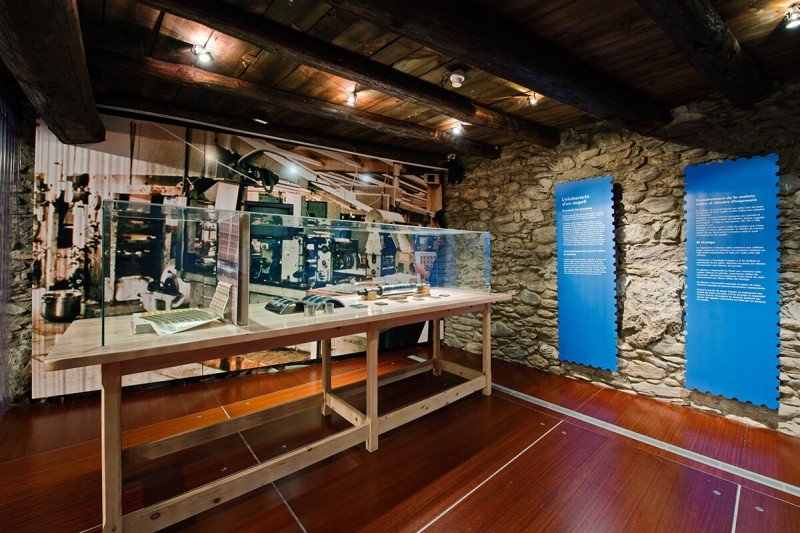The creation of a stamp
The work of the engraver
The first step in the production of a stamp is the creation of a design by an artist based on a commissioned theme and series.
The design that has been created is engraved from a photograph projected in reverse onto a steel plate called the master die in a process known as intaglio. The engraver works with a binocular magnifying glass that enlarges the details of the plate to make his task easier. This task requires extreme precision as there can be as many as seven carvings per millimetre. The slightest mistake with the cutting tool or burin almost always means that the work has to be started again on a different plate. The master die is heated in a furnace to a temperature of between 800 and 900ºC with sodium cyanide and then cooled at full speed in a bath of mineral oil to temper the steel.
It takes about one hundred hours of work to engrave a stamp.
Transferring from the master die to the transfer roll
This operation consists of reproducing the master die impression on a small mild-steel cylinder mounted on an axle called a transfer roll. This taking of print is machine-pressed, and the pressure can reach 5 or 6 tonnes.
When the operation has finished, we have the original engraving on the transfer roll with the relief in a positive impression. The transfer roll is then hardened following the same procedure as that used for the die.
Transferring the transfer roll to the printing plate
The transfer roll on which all the engraving holes of the future stamp are embossed is fastened to a printing press.
This machine makes it possible to reproduce the engraving of the transfer roll by pressure on a cylinder as many times as there are stamps on a press, which may be 25, 30 or 100 depending on each case.
Once the excess ink that has formed around the engravings has been scraped away and polished, the cylinder is chrome plated before being fixed to the press on which the stamps are printed.
Printing
Printing is done on rotary presses that use gummed paper on reels. The copperplate rotary presses print three sheets for each revolution of the cylinder.
The paper is first moistened in order to facilitate the penetration of the grooves. It is then passed through the printing cylinder and the pressure cylinder.
The printing press is inked by contact with plastic coated rolls, known as touching rolls, with each one fed with a colour ink determined by other dyeing rollers.
The printing press applies its various inks to the paper in a successive and superimposed manner.
A strip of tissue paper is superimposed on the band of printed paper to protect the still fresh print. The unit is then perforated to provide teeth for the stamps and is presented in sheets that are cut using a shearing system.




_1998.jpg)
_1998.jpg)